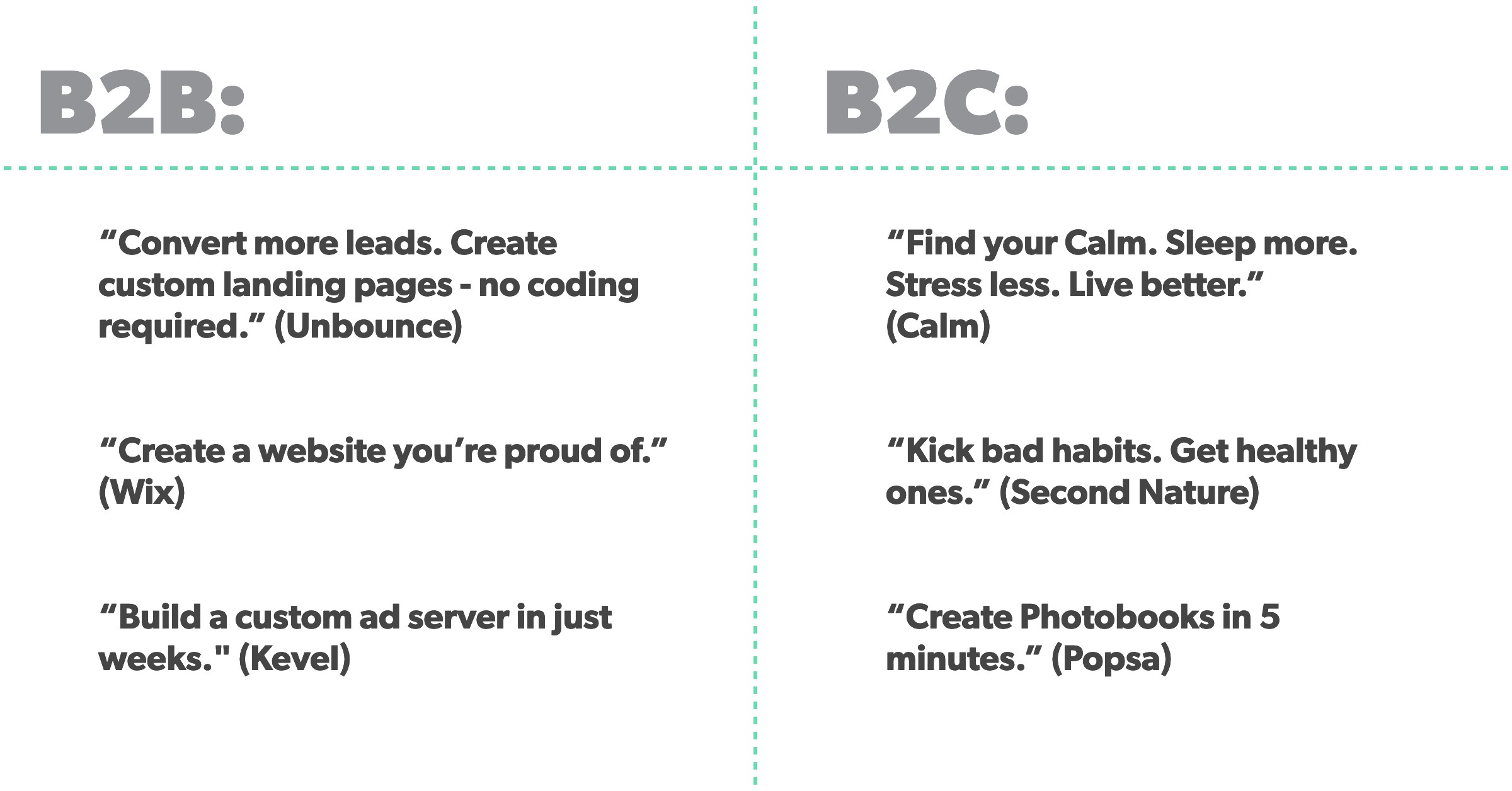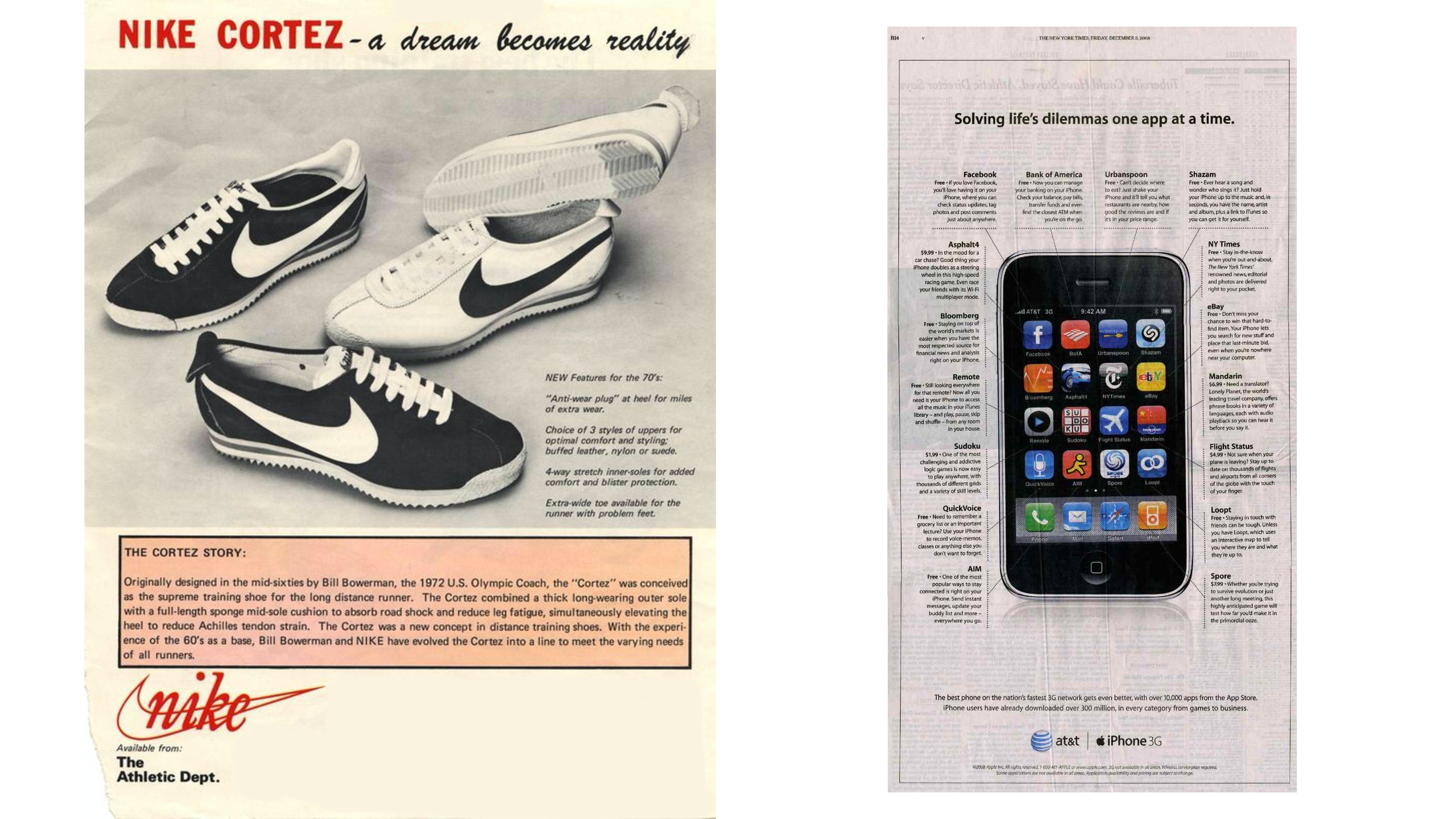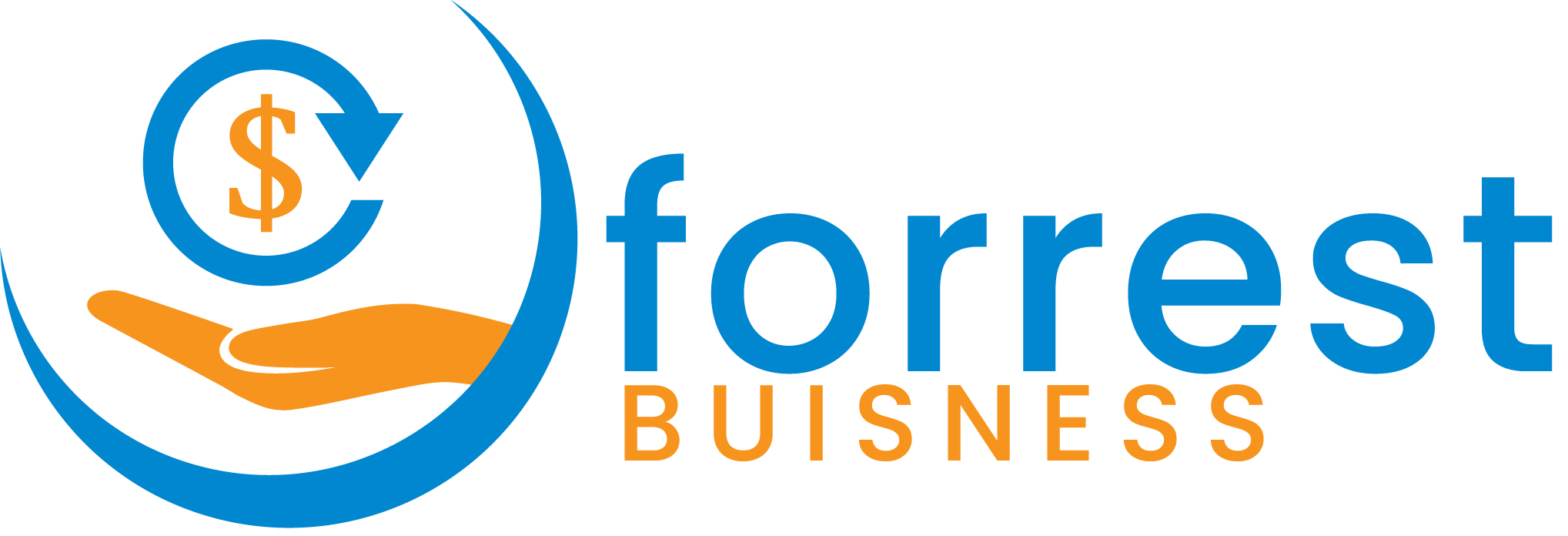Introduction
This text is written by Matt Lerner, co-founder and CEO at Startup Core Strengths, an organization that helps Seed and Collection A startups speed up progress with a metrics-driven strategy of fast experimentation. Beforehand, he was an investor at 500 Startups and ran B2B progress groups at PayPal. For extra of his insights on rising a startup, try his e-newsletter.
Right here’s a fast take a look at: Which one in every of these headlines transformed 10X higher?

Choice B transformed guests to signups 10X higher (30%) than the primary model (3%). Dozens of occasions now in my profession as an operator, investor and advisor, I’ve seen adjustments in a handful of phrases yield jaw-dropping variations in conversion. Listed below are a number of extra examples:
What’s occurring right here isn’t magic, neither is it “simply advertising and marketing ways.” It’s language/market match at work — while you discover the precise proper phrases to elucidate your services or products to potential clients, phrases that resonate with targets and struggles which might be already of their brains. If you speak about your product, a lightbulb of their heads switches on that claims, “That’s EXACTLY what I’m searching for” — they really feel such as you’ve learn their minds.
I actually didn’t understand till I jumped the wall from operator to VC and noticed a whole bunch of early-stage firms, however now it’s clear as day: language/market match is probably the most under-appreciated idea for early-stage startups.
For starters, most founders are targeted on discovering product/market match, zeroing in on the best set of options to match their prospects’ wants. Furthermore, fine-tuning language looks like “advertising and marketing,” which is normally seen as a later precedence, not step zero. Lastly, individuals additionally do not have a tendency to love going out of their consolation zone — and for technical founders particularly, this work normally is.
But there are actual prices to not prioritizing this deeper work. Earlier than language/market match, progress seems like pushing on a string, a whole lot of work for incremental positive factors. Your Fb advertisements barely pay for themselves and your AdWords don’t. Your entrepreneurs battle to ship outcomes regardless of success with earlier firms. Your salespeople (apart from your founder) battle to promote your product. And your conversion charges hover between 0.5% and three%.
On the opposite facet, I’ve seen firms with language/market match usually get conversion charges from 8% – 40%, which leads to a lot stronger unit economics. Why the sudden bounce? Guests to your web site or app retailer itemizing carry totally different ranges of intent. It’s straightforward to transform high-intent customers. However in the event you’re an unfamiliar startup, most of your guests may have low intent, extra curious than determined. As you tighten up your language, you’ll have the ability to minimize by way of to that large pool of low-intent site visitors.

For my part, it’s the “lead domino,” the duty that, when you get it proper, makes every thing simpler. Whereas low conversion charges are the obvious symptom, language/market match runs a lot deeper. It helps you perceive and measurement your market, slender in on what to construct, validate demand and reveal traction, which might actually assist with hiring and fundraising. The enterprise affect is abrupt, not gradual. It’s like choosing a lock. And when it lastly clicks, it’s thrilling.
That’s why the recommendation I share with founders today is at all times constant: When you do not need language/market match, put down your instruments and go discover it. When you’re doing the rest, you’re squandering precious time. Cease no matter you’re doing. Cease chasing product/market match. Cease pumping cash into Fb and AdWords, cease making an attempt to interchange your advertising and marketing staff. Till you discover language/market match, nothing else will actually work. Overlook the signs. Handle the foundation trigger first.
Beneath, I’ll share extra about why discovering language/market match ought to be “step zero” for startups, explaining the neurological foundation for this phenomena and exhibiting, step-by-step, how startups can discover it. When you’re a pre-product/market match founder, or a head of product or progress, this strategy can prevent a whole lot of time and wasted cycles.

My recommendation for founders is usually so as to add on the seek for language/market match as part of the client discovery course of. (There are, in fact, examples the place that counsel doesn’t apply as a result of language/market match is much less vital in sure contexts, whether or not it’s a biotech startup creating a brand new most cancers immunotherapy drug, or a pair of co-founders who’re constructing merchandise to scratch their very own itch, and thus already know the use case intimately.)
But when that ship has sailed and also you’ve already gotten began with constructing and aren’t discovering product/market match but, I’d advocate stepping again and searching for language/market match. Constructing stuff that doesn’t get any traction is an costly mistake, in additional methods than one. Every new function provides a slew of downstream results, from creating tech debt and requiring regression testing for every launch, to including bloat that makes the product more durable to make use of — and the proposition extra difficult, and thus, more durable to promote.
Beginning with language/market match brings three different huge benefits:
1. Velocity – Product build-measure-learn cycles, even simply prototyping, can take weeks. However you possibly can iterate language 5X in a single day.
2. Traction – A pre-launch lead-capture web site (that markets the product to validate demand) with 25% conversion is a robust sign to potential traders, plus it queues up a product waitlist of potential beta testers.
3. Readability – Most significantly, a transparent, validated, plain-English articulation of your worth prop actually helps all the staff perceive what they’re constructing and why.
That third level is vital: Working backwards, each profitable startup creates one thing that individuals discover really helpful. When you can’t even describe what your clients try to do in easy language, how lengthy will it take you to invent a product they may love? With clear validated language, you possibly can enhance each side of the client expertise.
When you possibly can perceive and articulate your clients’ targets and struggles and anxieties in easy, exact language, your builders and product groups won’t must guess at what to construct.
You may, in fact, chase product/market match with a build-measure-learn loop. However iterating language goes a lot quicker. In the present day’s leanest startups take a look at “minimal viable” prototypes, iterating each few weeks. However why spend weeks prototyping when you possibly can iterate and take a look at/validate language in minutes? (I’ll clarify that course of under.)
However why is the precise language so vital?
Once I hear that founders wish to “educate the market,” I get nervous. In an effort to educate anyone, it is advisable totally seize their consideration and get them to droop their present beliefs and think about, undertake and grasp a brand new means of working. I run an training enterprise, and I have to say that could be a herculean process.
As an unknown startup, it’s arduous sufficient to even get individuals to learn or click on in your advertisements, not to mention rewrite their beliefs or change habits.
As you’ve most likely observed, we don’t learn startups’ web sites the way in which we learn books. As an alternative of studying every sentence, our consideration bounces round, scanning, and infrequently scrolling or clicking. Psychologists name that scanning course of attentional management; guests are deciding if they need to make investments a number of extra seconds and direct extra of their consideration to your web site, ad or app retailer itemizing or simply bounce. Which means consideration is the primary hurdle in your funnel, and doubtless the one with the most important drop-off. So how do people allocate consideration?
Psychologists have noticed that we change between two modes of attentional management relying on the scenario, and other people have an innate desire for one mode or the opposite. The 2 modes are:
1. Objective-directed (top-down) consideration: When it is advisable discover one thing particular, you’ve a selected consequence in-mind, and also you’re searching for issues that can provide help to get there. For instance, think about a sequence of Google searches researching the very best dietary supplements and behavioral routines to fight insomnia — that’s top-down.
2. Stimulus pushed (Bottoms-up): When your thoughts is targeted on the uncooked sensory enter, searching for attention-grabbing issues, like while you’re scrolling by way of your Instagram feed, that’s bottoms-up.
(No, I do not suppose it’s a coincidence that the 2 dominant media properties on the web, Google and Fb, align completely with the 2 modes of attentional management in human cognition — goal-directed and stimulus-driven.)
Until your aim is capturing and holding consideration for its personal sake, like Buzzfeed, you’re most likely making an attempt to get their consideration as a method to an finish, so you possibly can promote them a services or products. Subsequently, we’ll deal with unpacking top-down, goal-directed consideration.
Objective-directed consideration entails a fast pre-conscious, first-fit pattern-match. Which means we now have this very particular goal in-mind and we’re wanting round trying to find an in depth match. (Think about rummaging by way of your cutlery drawer for the garlic press.) So each web site customer has a selected aim in-mind, they usually take fast snapshots of knowledge and evaluate them to that focus on to see if it’s on-goal or off-goal? Getting hotter or colder? That’s how they determine between “maintain scrolling,” “click on right here,” or “again button.”

Psychologists name this data foraging, as a result of it resembles the way in which our ancestors (and all vertebrates actually) appeared for meals within the wild. Animals have a selected stimulus in thoughts, like a banana, they usually’re rapidly pattern-matching towards it to direct consideration and motion.
Prospects your advertisements and trying out your web site are most likely not, within the first on the spot, considering or reasoning. They’re foraging, actually doing a unconscious sample match to see in case your providing “seems like meals.”
This course of takes nanoseconds. In an effort to win them over and get them to take a position a bit extra consideration to ponder your options or pricing, first it is advisable get previous this triage and “seem like meals.” Subsequently, it is advisable perceive the goal of their mind. In different phrases, it is advisable learn their minds.
This impact is clear in paid search. When individuals purchase search phrases, click on charges are larger if the ad copy precisely matches the search question syntax, moderately than a paraphrase. (See this fast instance under.)
.jpg)
So what’s in your prospects’ heads? When you may cease individuals in the course of their day and snapshot-read their minds, what would you discover? You’d not discover a listing of product options or advertising and marketing platitudes. You’d see anxieties, fears, doubts, hopes, goals and struggles. Subsequently the easiest way to get previous the eye filter is to speak concerning the stuff that’s of their heads — particular targets, struggles and doubts.
.jpg)
A easy take a look at: In case your headline completes the sentence “Our product is…” You’re not utilizing their phrases. In case your headline completes the sentence “Now you possibly can ______” or “I want I may _____” or “Sometime I hope to _____” then your language may resonate. A very good marketer will fill that “now you possibly can” clean with precisely the best phrases. Just a few confirmed examples:

So how do you discover your proper phrases? Our reply comes from Clayton Christensen at Harvard Enterprise Faculty, creator of “The Innovator’s Dilemma,” and Bob Moesta of the Rewired Group, who developed a concept referred to as “Jobs To Be Executed.” (JTBD).
Jobs concept posits that we don’t really “purchase” services or products, we rent them to do jobs for us, the way in which we would rent a contractor, to assist us make progress in our lives. Which will sound like an esoteric distinction, nevertheless it’s vital.
What looks like a easy buy resolution sits inside a bigger context within the clients’ lives. And as entrepreneurs, that context is vital, as a result of the phrases of their heads will replicate their scenario moderately than your product.
Subsequently, the higher we perceive that context, the simpler our product and advertising and marketing groups will probably be. Historically “jobs interviews” are utilized by product managers, however once we work with firms as a part of Startup Core Strengths, we discover the jobs-to-be-done interview method may type the premise on your advertising and marketing. Since our focus is language, we’ll seize the particular phrases individuals use to explain their struggles and desired outcomes, plus in fact the social and emotional elements of the job.
Use this four-step course of to unlock language/market match:
We assist firms discover language/market match with these 4 steps:
1. Uncover the struggles, hidden assumptions and targets by way of interviewing latest sign-ups
2. Draft some take a look at messages based mostly on the interview transcripts
3. Validate comprehension qualitatively
4. Lastly, take a look at the language quantitatively
1. Uncover their targets, struggles and language
Earlier than we are able to promote anyone a product, we first want to grasp the way it will match into their lives — what they’re making an attempt to do. Christensen calls that the “job.” And together with his collaborator Bob Moesta, he got here up with a really particular interview method to uncover that context:
Discover anyone who has lately bought your product. In case your product has not but launched, interview somebody who purchased a competitor’s product, used a workaround, or requested for “alternate options to” on Twitter. In different phrases, discover somebody who has lately invested money and time to make progress on the factor you assist individuals do.
Ask them to stroll you thru the acquisition course of from the very starting. When did they first understand they have been battling that aim? Stroll by way of their journey, step-by-step.
As they recount their journey, ask questions to grasp what they have been struggling to do, the place they appeared for assist, and which alternate options they tried. Questions like: What’s going to this buy let you obtain? Why is that vital to you? Describe while you first considered shopping for one thing like this — what have been you making an attempt to do? What have been you utilizing to do that earlier than? What choices did you think about first? The place did you search for concepts or assist?
As they go, politely interrupt them to make clear two issues: 1) After they use a imprecise time period like “higher,” “versatile,” “handy,” or “all-in-one” ask them to unpack it for you. “What does ‘higher’ imply to you on this context?” 2) Ask probing inquiries to uncover causality – e.g. “do you keep in mind why you determined to go to that retailer on that exact day?” or “You simply stated you’d been having sleep issues for 14 months, what prompted you to purchase a brand new mattress on that exact day?”
That’s it. There aren’t any proper or incorrect solutions, simply ask them to speak you thru it as if you have been making a documentary movie. Hear for his or her targets and struggles, and any different options they could have tried. Look ahead to feelings and encourage them to discover their emotions. As they converse, ensure that to seize their actual phrases.
If this appears overwhelming, we created these interview “cheat sheet” playing cards with query prompts, which simplify the method. Additionally, to look at a hands-on demonstration of how one can run a Jobs interview, try this workshop run by Bob Moesta and Chris Speck.
Even after simply 5 interviews you must begin to see patterns. (Although there’s no hurt in doing extra!) Returning to the primary instance on the very starting of this publish, Mindstone founder Joshua Wöhle actually text-mined their interview transcripts, utilizing a textual content evaluation instrument to drag out all of the verbs that his clients used. He discovered the commonest ones, pulled out the encircling phrases for context, and used that language to craft his 10X headline.
2. Subsequent, draft some headlines.
Out of your interviews, you must have an inventory of individuals’s targets (“I wish to…” “I want it have been simpler to…”) and struggles (“I hate it when… I’m uninterested in… Why can’t I simply…”)
Pull out those that you just suppose will resonate with most of your prospects, and write them up as headlines that full the sentence “Now you possibly can…” (Prospects will usually say “I used to be making an attempt to” or “I wanted a instrument that would…” These sentences can simply flip into “now you possibly can.”) For instance, think about the phrases “Now you possibly can” earlier than any of my earlier examples:
“Construct a customized ad server in simply weeks.” (Kevel)
“Enhance app retailer conversion charges and pay much less for each set up.” (Storemaven)
“Create Photobooks in 5 minutes.” (Popsa)
Arrange, share and take notes on net pages, PDFs and educational papers simply, so you possibly can be taught quicker, keep in mind extra and get issues accomplished. (Mindstone)

Listed below are a number of extra tactical suggestions to remember as you’re drafting:
Stick with “I” not “you” struggles. Many of the headline examples right here describe the aim (e.g. Create a web site you’re happy with). In some circumstances, if individuals are conscious of the issue however reluctant to behave, similar to weight reduction or private finance, you’ll discover extra success speaking concerning the battle first within the headline. If you wish to attempt some “battle” headlines, write within the first individual (I moderately than “you”), and keep away from rhetorical questions. For instance: “I’m uninterested in getting screwed by my financial institution” (feels higher than “Are you uninterested in getting screwed by your financial institution?”) and “None of my garments match anymore, and I take into consideration meals continually.” (Feels a lot higher than “Are you getting too fats on your garments? Are you obsessive about meals?”) When you go this route, observe up the “battle” assertion along with your “now you possibly can” aim assertion as a sub-headline.
Keep away from imprecise platitudes or something that feels like advertising and marketing, similar to “multi function,” “quicker,” “revolutionary” or “handy.” These platitudes engender cynicism, and other people won’t infer what they imply. It forces prospects to both guess at what you do or take your phrase for it that you just’re superior — which they’re unlikely to do, on condition that your guarantees will “sound like advertising and marketing.” As an alternative, deal with particular targets and duties.
Keep particular. On a associated word, we are inclined to say stuff like “multi function” as a result of we do not know which advantages to speak about. That is significantly acute once we’re making an attempt to attraction to a broad viewers. However in the event you actually perceive the shoppers’ targets and struggles, you possibly can normally discover a message that is fairly particular however nonetheless has broad attraction. For instance, I labored with a compliance SaaS startup that targets Fintech firms, industrial actual property, company HR and legal professionals (fairly a broad set!). The successful messages that resonated with all prospects weren’t watered down, however moderately particular angles like “I hate asking individuals for a replica of their passports” and “I am not prepared for an audit.”
3. Validate comprehension
A/B testing can inform us which headline will get extra clicks, nevertheless it can’t present us why. Subsequently, earlier than you begin A/B testing totally different choices, it’s vital to verify your phrases imply what you suppose they imply when prospects learn them.
For instance, if I marketed an “all-in-one video resolution” which product would that be? YouTube? Tik Tok? Camtasia? iMovie? Last Minimize Professional? Netflix? I can’t truthfully guess. But when I stated “routinely add subtitles to your movies earlier than you publish them to social media” you’d have a a lot better concept of what we’d provide help to do.
Validating comprehension is kind of easy: First, sort out every headline on a presentation slide or in a doc in a big clear font (no design wanted). You may run this take a look at in your laptop computer display screen, over Zoom, and even utilizing printouts.
Subsequent, discover anyone to check it on — it may possibly actually be anybody until your trade has specialised jargon. Clarify that you just’re engaged on some new messaging and wish to run it previous them if they may spare one minute. (I usually stroll to the cafe space of my co-working house, or run it at the start of a Zoom name while ready for stragglers to reach.)
Inform your volunteer there aren’t any proper or incorrect solutions, simply regardless of the message means to them. Open your laptop computer (or take out the sheet of paper), and present it to them for 5 seconds, then, with out warning, take it away. (Why solely 5 seconds? Keep in mind — that is all concerning the lizard mind! Individuals are not going to check your web site. They both get it or they don’t. So don’t warn them that they may solely have 5 seconds, simply shut the laptop computer.)
Subsequent, ask them a number of questions:
“Do you recall what that stated?” (Might they learn the phrases accurately? Many individuals don’t really learn, they scan and skip lengthy complicated phrases.)
And what do you suppose that’s? What wouldn’t it do for you? (Checking how they interpret the phrases). If they only repeat the headline again to you once more, they most likely didn’t perceive it.
Ask them to elucidate in their very own phrases – “However what do you suppose meaning?” (In the event that they nonetheless don’t perceive it, your guests received’t both!)
Repeat this course of 4X for every headline. Take the suggestions, iterate, and take a look at your new language. When you’re unsure how one can phrase one thing in “regular individuals language” attempt a Google seek for the phrase. When you scroll all the way down to the underside the place it says “individuals additionally looked for…” you might discover some extra fashionable synonyms. It’s also possible to double-check language utilizing a key phrase instrument like SEMRush or Ubersuggest. For instance, I as soon as labored with a inventory buying and selling app (or so I believed). However our key phrase analysis confirmed that the search quantity for “investing app” was 2X larger than “inventory buying and selling app.”
Repeat this course of till individuals actually perceive your headline and subhead. (It is best to have the ability to get by way of 4 iterations in a day.)
4. Run this quant take a look at
Subsequent you wish to take a look at your new headline(s) towards your present possibility. Touchdown web page A/B checks take too lengthy until you’ve a whole lot of site visitors, so it might be faster to check messages in ad impressions, for instance on Fb or Instagram. Create a number of copies of a easy ad design, and run that very same ad with totally different headlines, and see which one performs finest along with your viewers. Even in the event you don’t quant-test these, you’ll have much more success even simply doing steps 1-3.
That’s it! When you’re struggling to search out product/market match, cease hiring, cease coding. Go work out what “seems like meals” to your prospects and lock in language/market match first. It makes every thing else simpler.
One remaining warning: Your company will hate this
Your entrepreneurs and your company will name these messages boring, spinoff and practical. As a result of each marketer needs to put in writing the following “Simply Do It” or “Suppose Totally different.” (And who can blame them?) However right here’s the issue: Nike and Apple already constructed ubiquitous consciousness and comprehension, so their advertisements might be ephemeral and allusive. They earned that proper over a long time. Your revolutionary little startup didn’t (but). So it is advisable begin with clear practical messaging till individuals perceive what you possibly can assist them obtain. Take coronary heart, even Nike and the iPhone began out with boring practical messaging at first (see under).

Due to Hiten Shah and Ellen Fishbein on your extremely worthwhile suggestions on earlier drafts, and to Dr. Michael Halassa at MIT for patiently reviewing and correcting the neuroscience!
Cowl picture by Getty Photographs / Eskay Lim / EyeEm.

